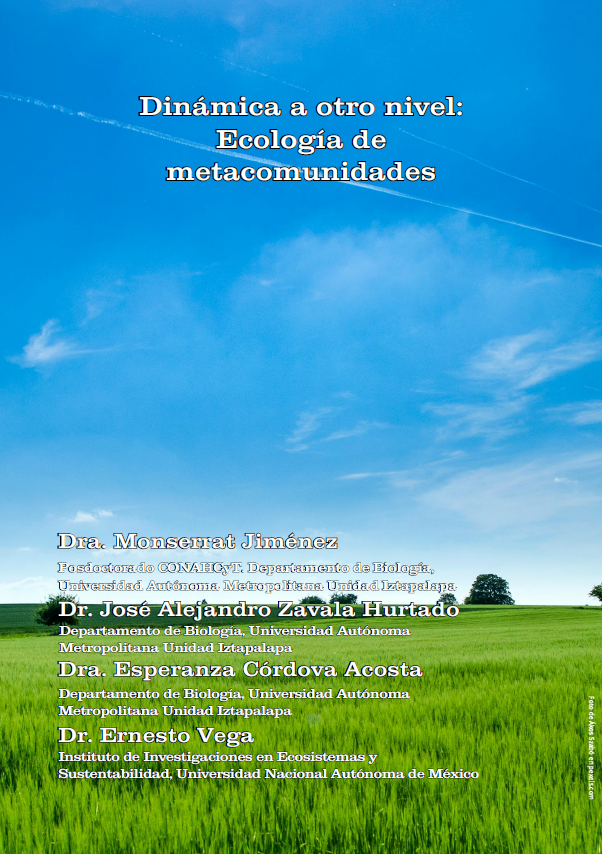Dinámica a otro nivel
Ecología de metacomunidades
Abstract
This paper analyses the structure and dynamics of metacommunities, emphasizing that natural communities are dynamic systems and not independent of regional processes. It presents theoretical models of metacommunity organization that describe patterns of this level of organization. These include the Clementsian, Gleasonian, uniform distribution, random and nested sets models. To analyze the structure of metacommunities, three key elements are used: coherence, species turnover and range boundary clustering. These structures would be defined by different combinations of deterministic and stochastic factors that influence the metacommunity structure. These factors would be integrated into the models of patch dynamics, species selection, mass effect and neutral. The metacommunity approach is fundamental to understand and confront processes such as land use change, habitat fragmentation and climate change.
Downloads
References
Clements, F. Plant succession: an analysis of the development of the vegetation. Carnegie Institution of Washington, Washington, 1916, pp.499.
Gleason, H. A. Further views on the succession concept. Ecology, 8, pp.299-326,1927.
Leibold, M. A. y Mikkelson, G. M. Coherence, species turnover and boundary clumping: elements of metacommunity structure. Oikos, 97, pp. 237-250, 2002.
Leibold, M. A., Holyoak, M., Mouquet, M., Amarasekare, P., Chase, J. M., Hoopes, M. F., Holt, R. D. J., Shurin, B., Law, R., Tilman, D., Loreau M. y Gonzalez, A. The metacommunity concept: a framework for multi-scale community ecology. Ecology Letters 7, pp. 601-613, 2004.
Mouquet, N. y M. Loreau. Coexistence in metacommunities: the regional similarity hypothesis. The American Naturalist, 159, pp.420-425, 2002.
Patterson BD, Atmar W. Nested subset and the structure of insular mammalian faunas and archipelagos. Biological Journal of the Linnean Society, 28, pp.65-82, 1986.
[https://doi.org/10.1111/j.1095-8312.1986.tb01749.x]
Presley, S.J., Willig, M.R. Gradients and the structure of neotropical metacommunites: effects of disturbance, elevation, landscape, and biogeography. In Myster, R.W. (eds) Neotropical Gradients and Their Analysis. Springer: Cham. 2023, pp.419-450. [https://doi.org/10.1007/978-3-031-22848-3_15]
Simberloff, D. Competition theory, hypothesis testing, and other community ecological buzzwords. American Naturalist, 122, pp.626-635, 1983. [https://doi.org/10.1086/284163]
Tilman D. Resource competition and community structure. Monographs in Population Biology 17. Princeton: Princeton University Press, pp.296, 1982. ISBN:9780691083025






